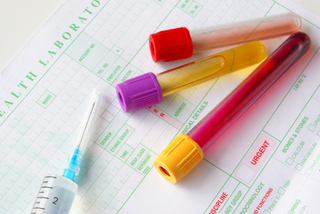The Basics of Laboratory Data-Continued
Posted on 04.07.2016

When it comes to laboratory data, punctuation isn’t the only beast that rears its ugly head. Other complexities such as variations in ‘normal’ values based on age and gender or unit of measure, and multiple names for a single test or panel can create a bit of head-scratching
For example, a doctor might dictate SGPT in one sentence and ALT in another, likely caught between two clichés: Old Habits Die Hard and Embrace Change. Other examples include SGOT/AST, SMA7/Chem-7/BMP, and SMA12/Chem-12/CMP. Actually, if you really want to stretch your brain, Lab Tests Online additionally lists Chemistry Panel, Chemistry Screen, SMA20, and SMAC as “somewhat outdated terms” for the comprehensive metabolic panel. Especially in a school setting where medical reports aren’t necessarily brand-spankin’ new, you’re likely to run across some old-school dictators using these “somewhat outdated terms.” And as if that isn’t enough, you likely caught the number discrepancies in those test names: namely, the BMP doesn’t have 7 individual results, it has 8; and the CMP doesn’t have 12 or 20, it has 14. We won’t delve into the whys and wherefores of it all. The main point is to be aware that laboratory names and tests change and evolve over the years, sometimes at a faster rate than the doctors dictating them.
Normal values based on gender and age can be so close in range that gender and age really don’t matter; in fact, their ranges may even be identical. On the other hand, their ranges can be so distant from each other that what would signify a critical value in one age group would signify a completely normal value in another.
Take, for example, alkaline phosphatase, part of the CMP. A value of 285 in an infant would be considered abnormally high. A value of 285 in an adult would be considered abnormally high. However, a value of 285 in a young teen would be considered completely normal since alkaline phosphatase levels increase during growth spurts. According to one Mosby’s resource, the normal ranges for alkaline phosphatase are as follows:
Adult: 30-120 units/L
Elderly: slightly higher than adults
under 2 years: 85-235 units/L
2-8 years: 65-210 units/L
9-15 years: 60-300 units/L
16-21 years: 30-200 units/L
Normal values based on unit of measure can also be so close in range that it really doesn’t matter or so different that being unfamiliar with the unit of measure variant will cause an otherwise normal value to appear to be critical.
You are already familiar with an example of this: blood cells on a routine blood test. A doctor might dictate white blood cell count as 6300 or as 6.3. That’s a huge difference in numbers but ultimately no difference when unit of measure is brought into the picture: 6300 x 109/L or 6.3/mm3. Again, we’re not going to get into the whys and wherefores of the matter because, quite frankly, it exceeds my math skills. The main point is to remember that if you come across a value that seems rather ‘out there,’ don’t just assume it’s an error; do a bit of research and then flag any value that still remains questionable.
Speaking of flagging, in the next article of this series we will explore some scenarios where appropriate flagging can assist in providing quality patient care, so stay tuned!